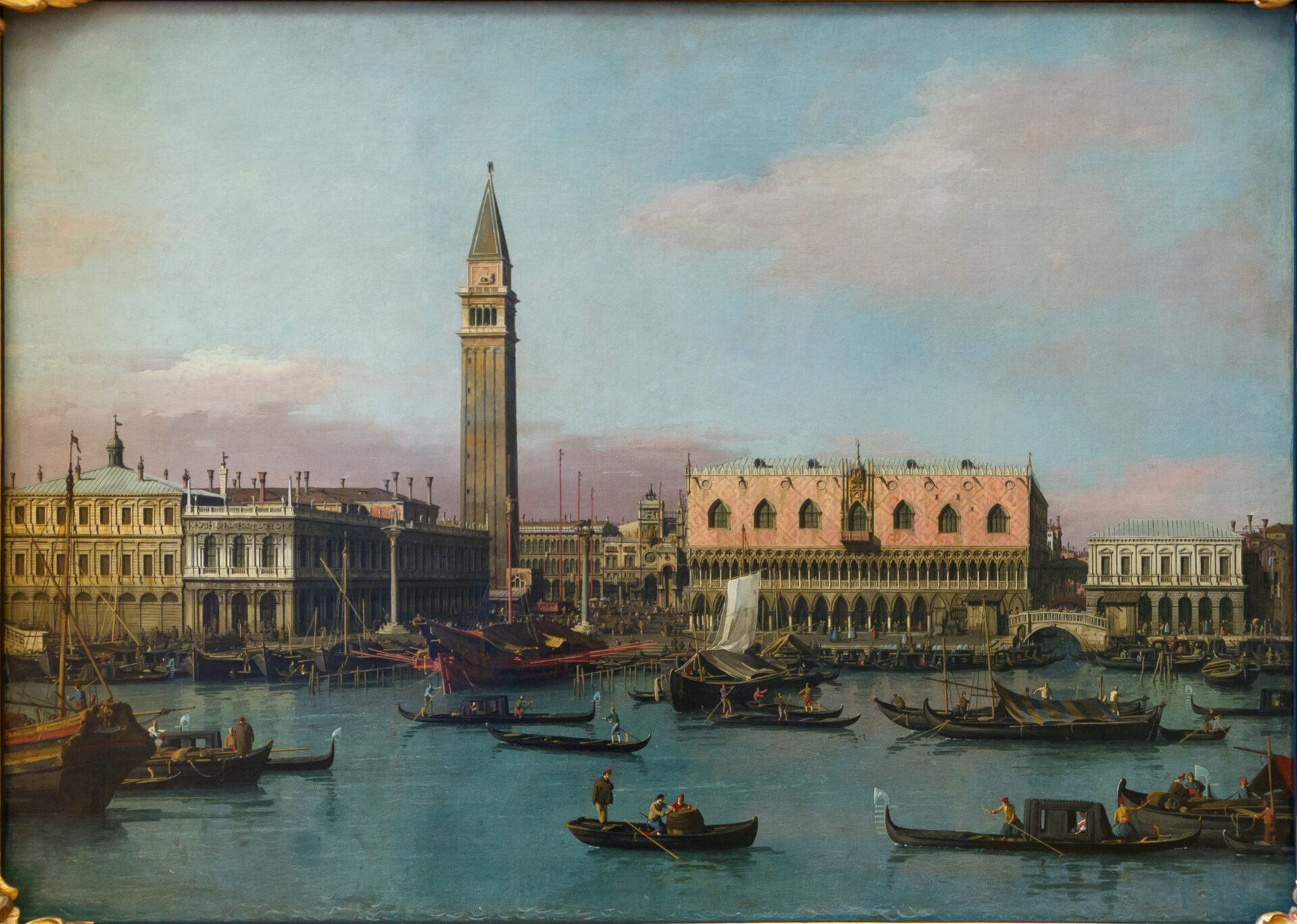The third great north Italian state, Venice, enjoyed a political stability that contrasted with the turbulence of Milan and Florence. By the fifteenth century the Republic of Saint Mark, as it was called, was in fact an empire that controlled the lower Po valley on the Italian mainland, the Dalmatian coast of the Adriatic, the Ionian islands, and part of mainland Greece. The Po territories had been annexed to secure the defenses and food supply of the island capital, and the others were the legacy of its aggressive role in the Crusades.
The Venetian constitution assumed its definitive form in the early fourteenth century. Earlier, the chief executive had been the doge, or “duke,” first appointed by the Byzantine emperor, then elected; the legislature had been a general assembly of all the citizens. However, the Venetian merchants feared that a powerful doge might establish a hereditary monarchy, and they found the assembly unwieldly and unbusinesslike.
Accordingly, they relegated the doge to a ceremonial role and transformed the old assembly into the Great Council, whose membership of 240 men was limited to the families listed in a special Golden Book. The Great Council, in turn, elected the doge and the members of the smaller councils, which really ran the government. Foremost among these was the Council of Ten, charged with maintaining the security of the republic.
The Venetian system gave a permanent monopoly of political power to the old merchant families listed in the Golden Book. Yet the oligarchs of Venice, while denying the majority a voice in politics and sternly repressing all opposition, instituted many projects that served the general welfare, from neighborhood fountains to a great naval arsenal. They treated the subject cities of the empire with fairness and generosity, and developed a corps of diplomats to serve the far-reaching concerns of a great commercial power. Venice was unique among Italian states for its political calm and order.

